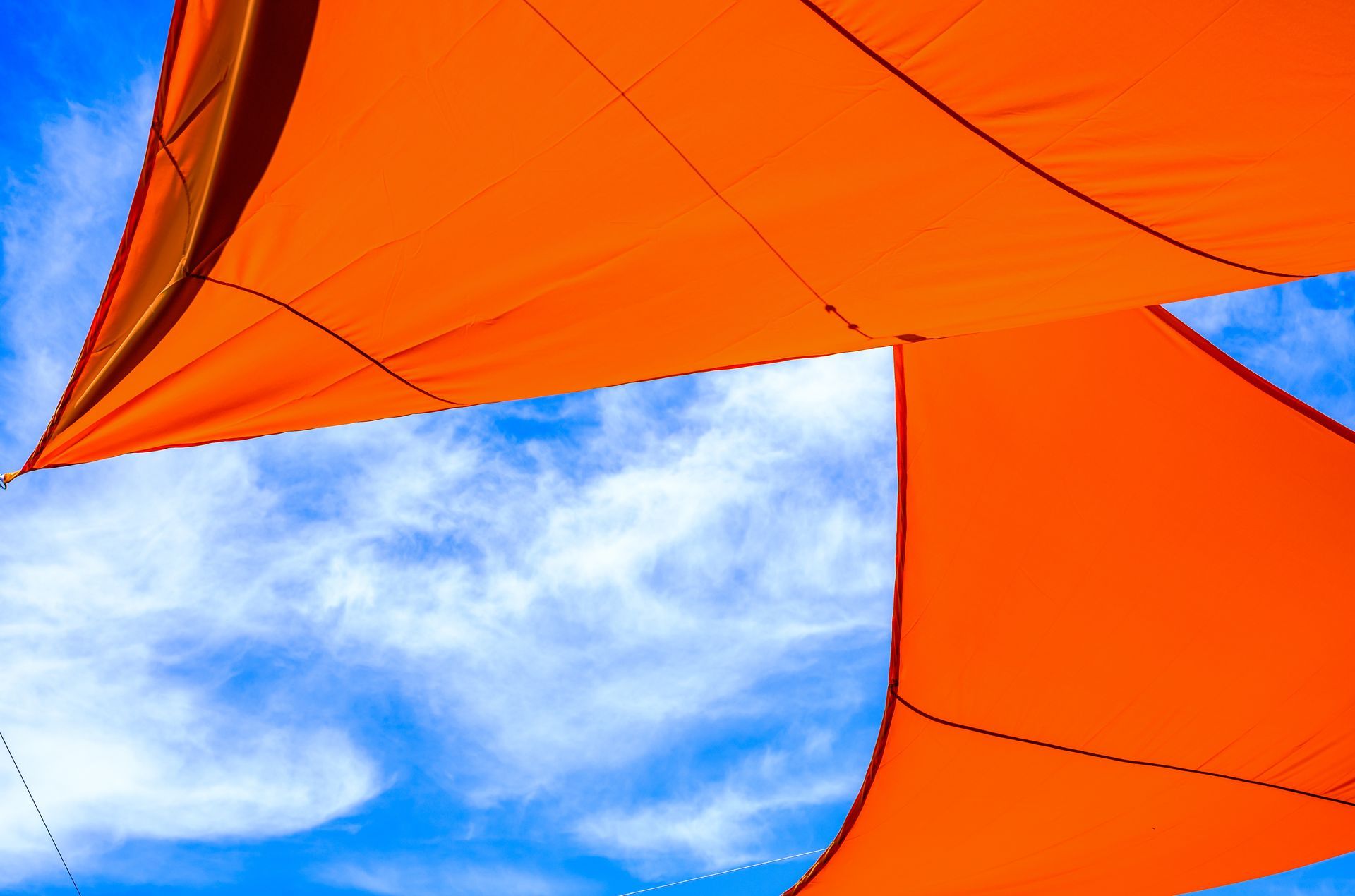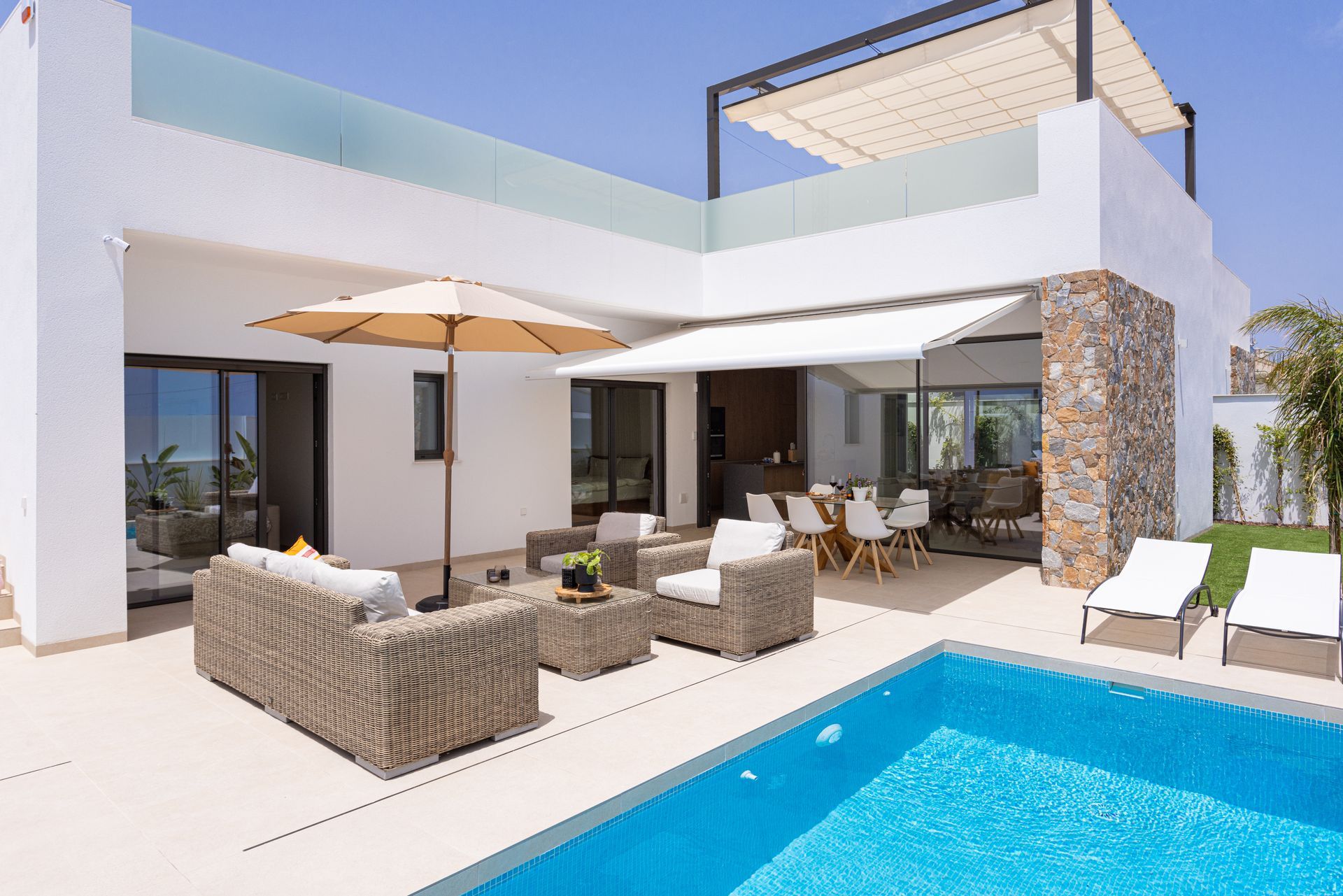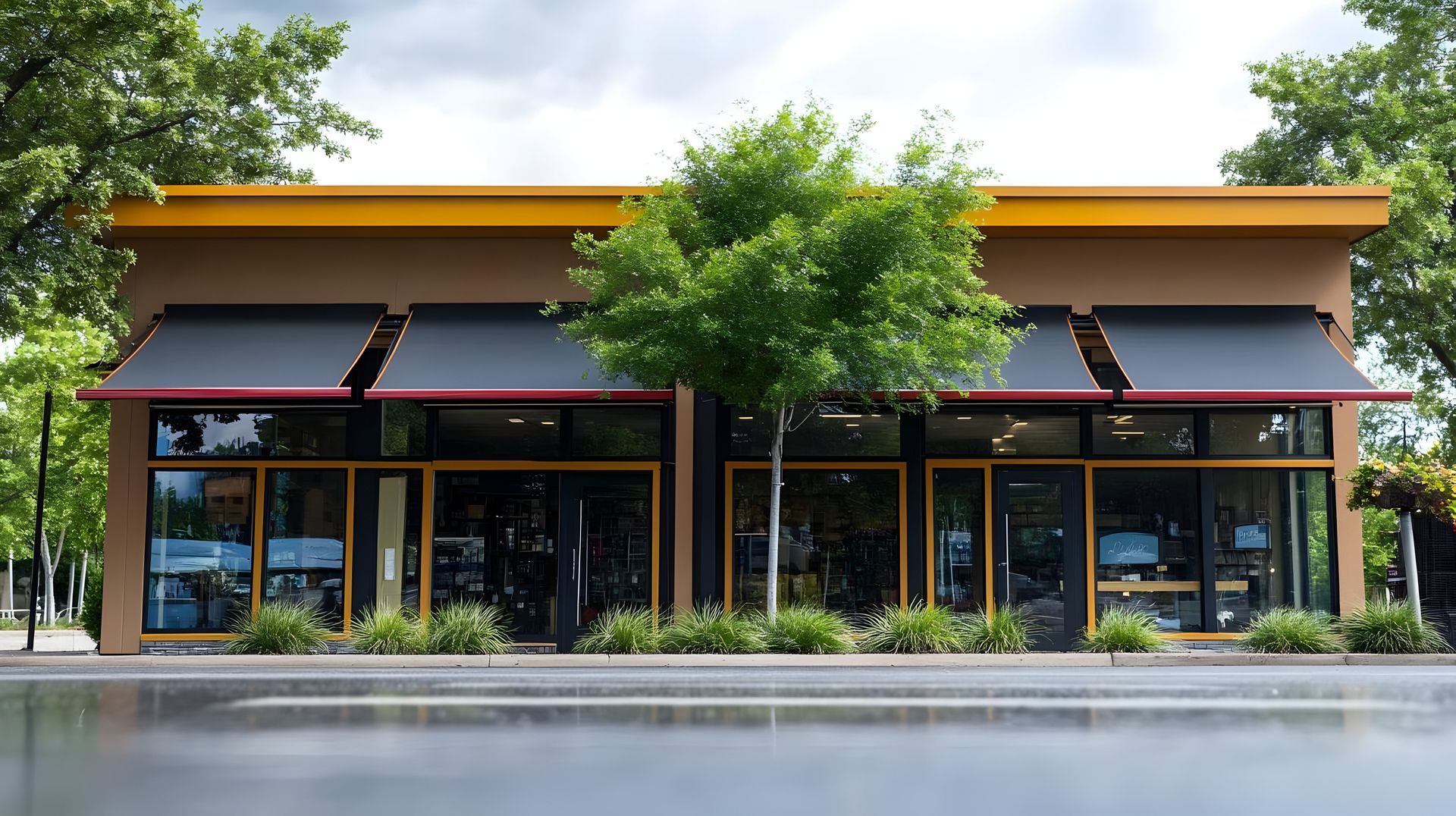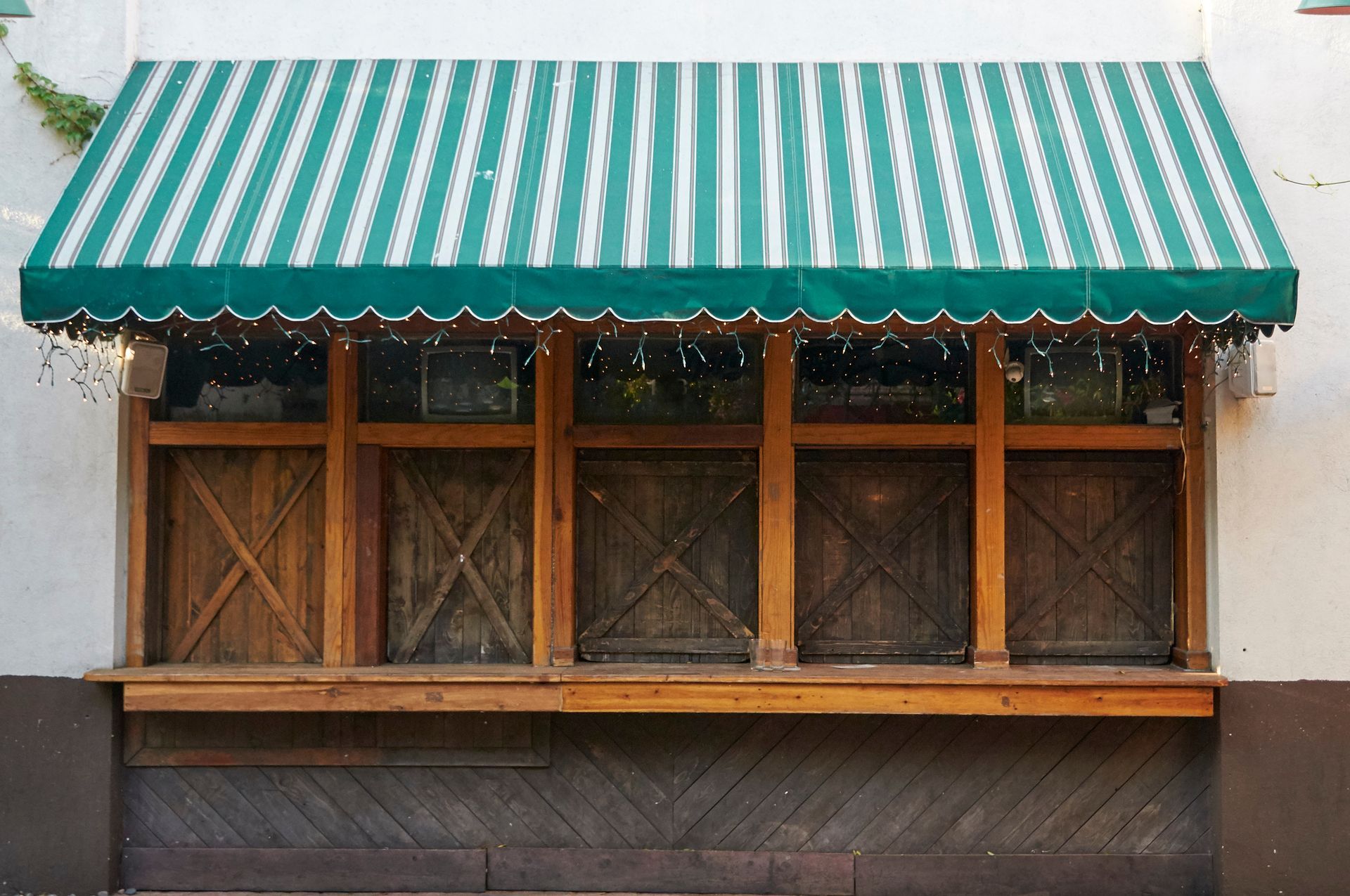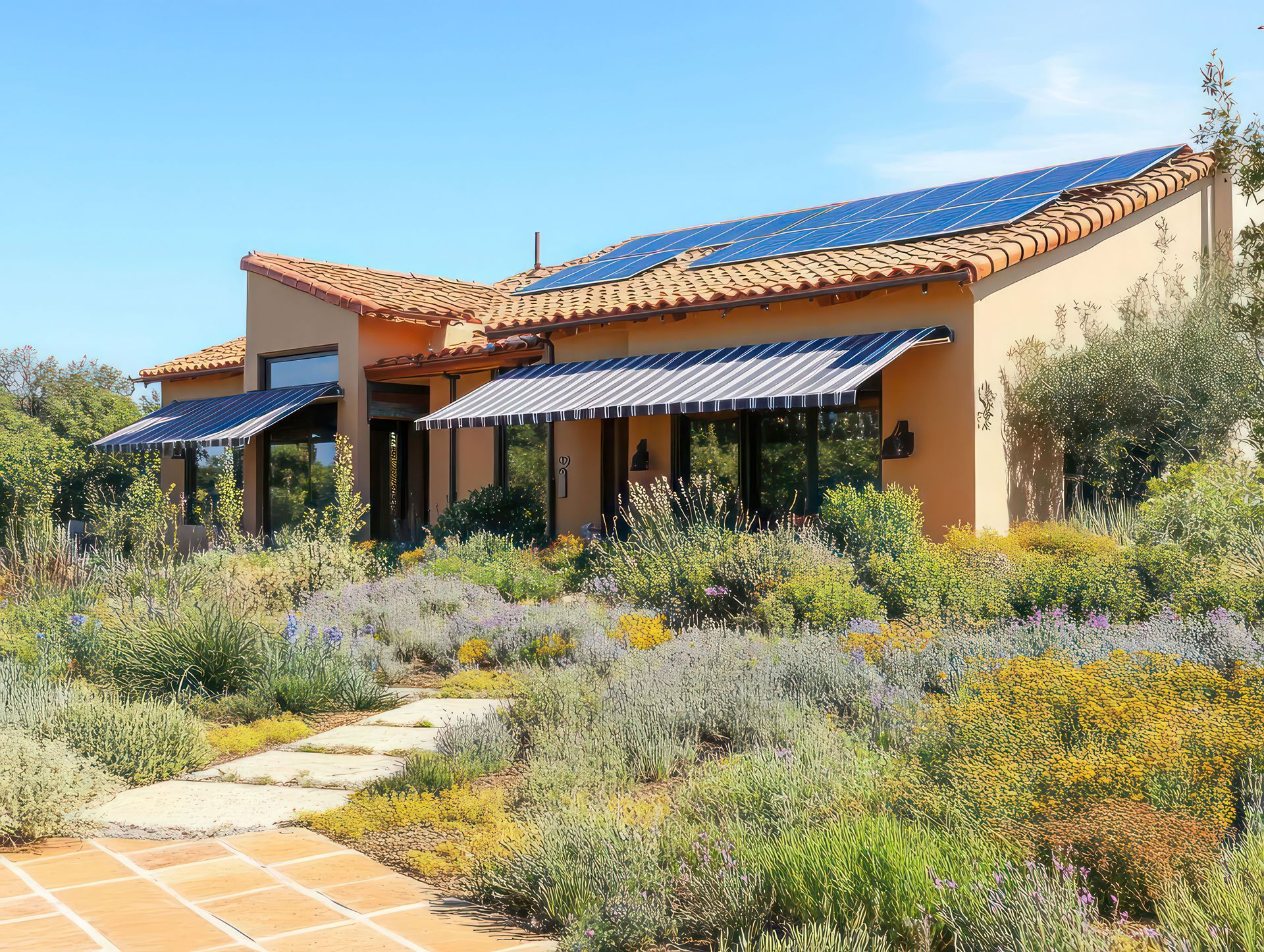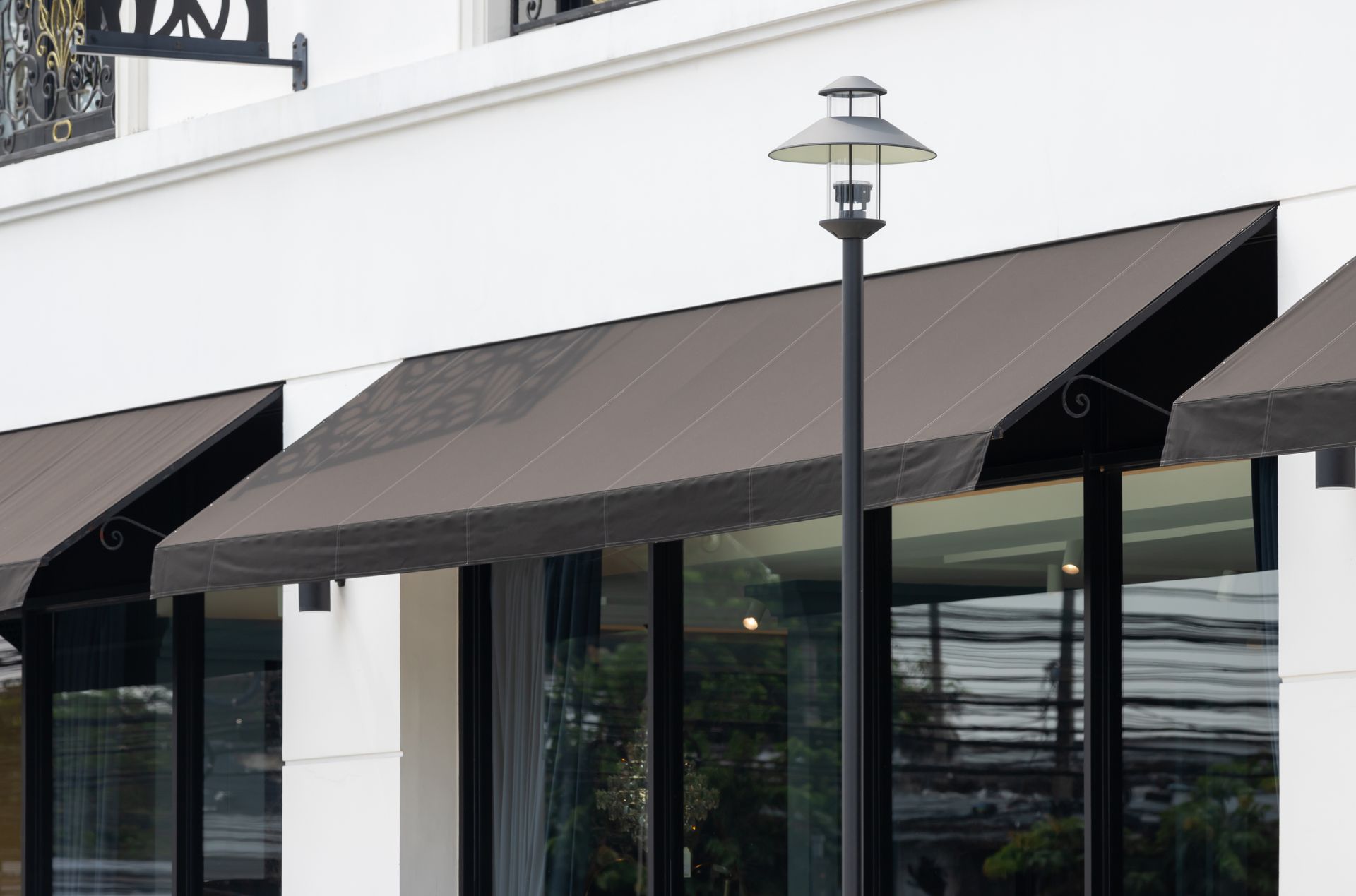Designing Awnings for Desert Landscaping
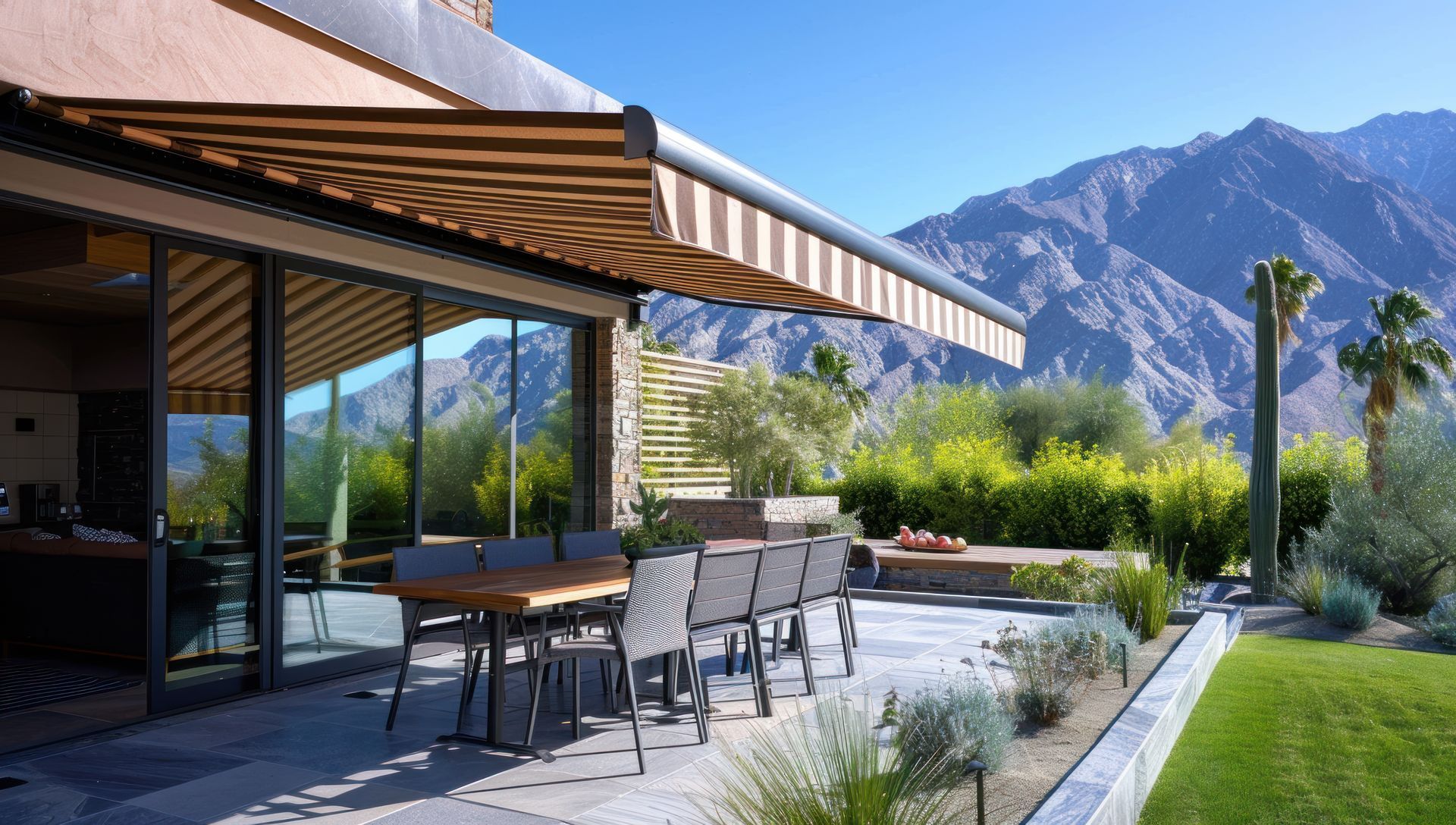
In Phoenix and other desert cities, landscaping isn’t just about choosing low-water plants and decorative rock. It’s also about how all of those elements interact with outdoor living features like awnings.
Between intense sun, reflective hardscapes, sharp cactus, irrigation systems and windblown dust, awnings on Phoenix homes and businesses face challenges that homeowners in other regions don’t encounter. Designing them thoughtfully ensures they not only last but also provide maximum comfort in your outdoor space.
Practical Design Tips for Phoenix Homeowners
When blending awnings with desert landscaping, here are some practical guidelines:
- Think Beyond Overhead Shade: Angle awnings or add drop panels to block reflected light from gravel or walls.
- Check Irrigation Zones: Adjust sprinklers and drip lines to prevent overspray on fabric.
- Maintain Plant Clearance: Keep cactus, agaves and sharp plants far enough away to avoid accidental contact.
- Invest in Stronger Fabrics: Opt for abrasion-resistant, solution-dyed acrylics with high UV ratings to handle dust and heat.
- Account for Growth: Plan for how trees and shrubs will mature around your awning space.
By planning with the desert environment in mind, your awning will last longer and your outdoor space will be far more comfortable.
Reflected Heat from Hardscape
One of the biggest surprises for desert homeowners is how hot a shaded patio can feel when it’s surrounded by reflective surfaces. Light-colored gravel, decomposed granite, concrete and even stucco walls bounce sunlight back upward. This reflection often makes a shaded area hotter than expected, essentially turning the awning into a “heat trap.”
Smart placement makes a difference. By angling or extending the awning in a way that intercepts reflected light, you can reduce the radiant heat beneath it. In some cases, adding side panels or drop shades helps block the glare and heat that bounce off the surrounding hardscape.
Irrigation Overspray Hazards
Drip systems, pop-up sprinklers or misaligned emitters can create overspray that hits the underside of an awning. Over time, that overspray can:
- Stain fabric with hard water spots
- Leave behind mineral buildup
- Corrode metal hardware
Awning placement and slope are crucial. Positioning an awning away from spray zones or ensuring runoff drips cleanly rather than pooling will protect both fabric and frame. When planning your yard, coordinate irrigation zones with awning installation so that one doesn’t undermine the other.
Cactus and Sharp Plant Proximity
Desert landscaping often includes striking plants like saguaros, agaves or ocotillos. They’re beautiful, but their spines and sharp edges can be a maintenance hazard if planted too close to an awning edge. During high winds, an awning fabric or valance that brushes against cactus spines can tear, fray or snag.
Clearance matters. Leave adequate buffer zones between awning edges and plants with spines, points or sharp edges. For retractable awnings, consider their full extension when measuring clearance. Designing landscaping and awnings together ensures beauty without the risk of accidental damage.
Dust from Gravel and Decomposed Granite
Gravel, crushed rock and decomposed granite are staples of Phoenix landscaping. Unfortunately, they also create dust, especially when kicked up during monsoon windstorms or dust devils. That dust doesn’t just settle on furniture; it also abrades fabric fibers, dulls colors and clogs retractable mechanisms.
Stronger fabrics and regular cleaning are key. Premium awning fabrics with abrasion resistance stand up better in dusty yards. Some homeowners even opt for darker colors that show fewer stains. In particularly exposed areas, choosing a sturdier frame and scheduling routine cleanings will extend the life of your awning.
Tree and Shrub Growth Considerations
Though desert yards often focus on cactus and gravel, many Phoenix homes also feature mesquite, palo verde, or desert willow trees for shade. While these trees are great for cooling, they pose challenges for awnings:
Sap and Pods: Falling seed pods, leaves and sticky sap can stain fabrics.
Growth Interference: Branches can extend into the path of retractable awnings, obstructing arms and mechanisms.
Pest Activity: Trees too close to awnings can attract birds or insects that leave droppings and residue on fabric.
Plan ahead for growth. When designing an awning, allow space for tree branches to spread and avoid placing retractable arms directly under foliage. Trimming and maintenance are equally important to protect fabric and hardware long-term.
Creating Comfortable Desert Living Spaces in Phoenix
Ultimately, designing an awning in Phoenix isn’t just about shade, it’s about creating harmony between architecture, landscaping and environment. With thoughtful placement, you can transform a backyard into a livable oasis that feels cool, private and low-maintenance.
At Arizona Awnings, we design shade solutions that complement Phoenix landscaping while standing up to the harsh desert climate.
Contact us online to schedule a consultation or give us a call at 602-252-3430 and see how the right awning placement can enhance your desert home for years to come.



